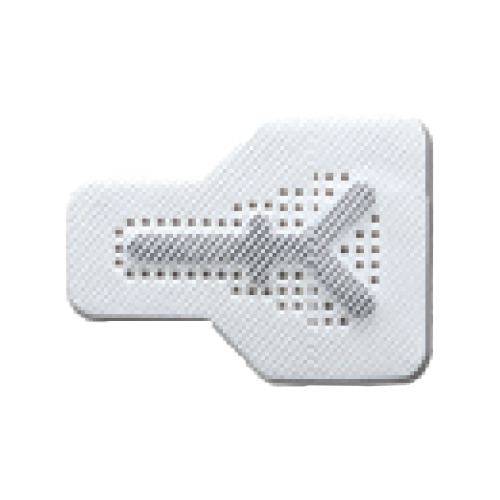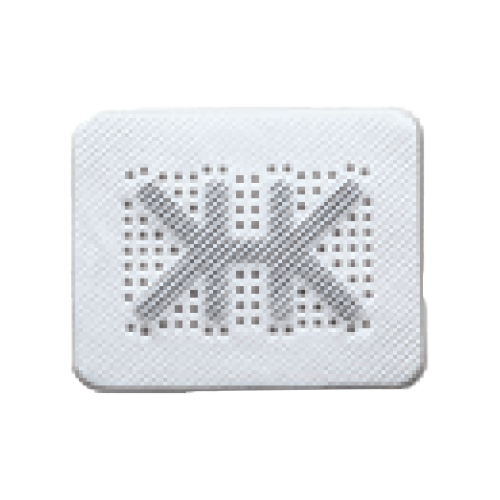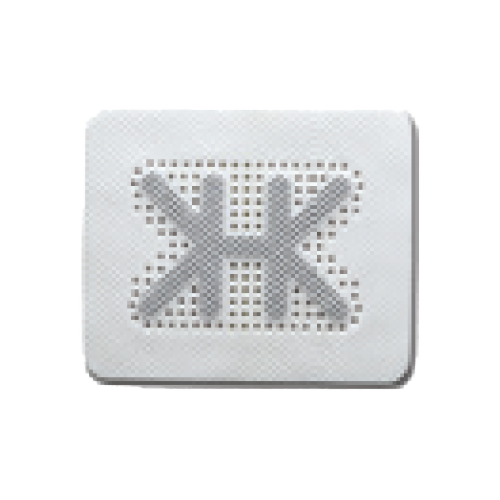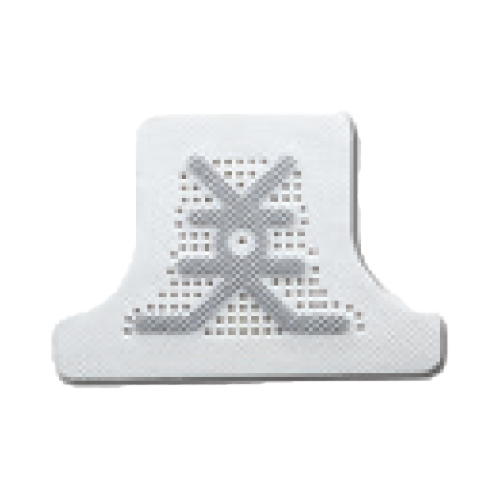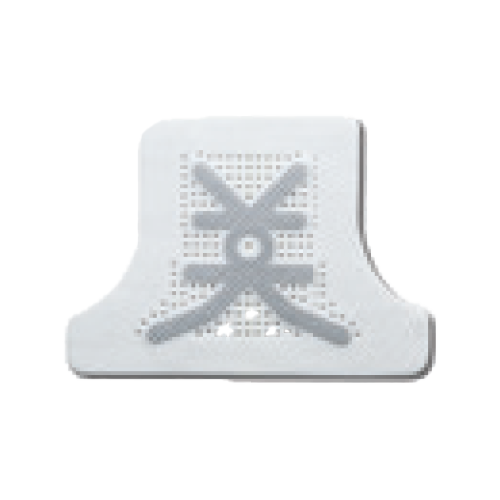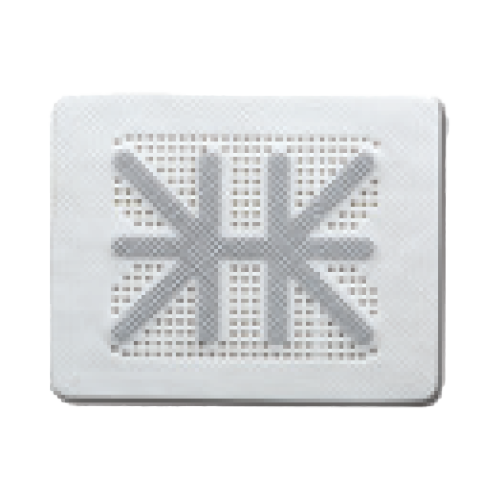Perforated Ti-Enforced®
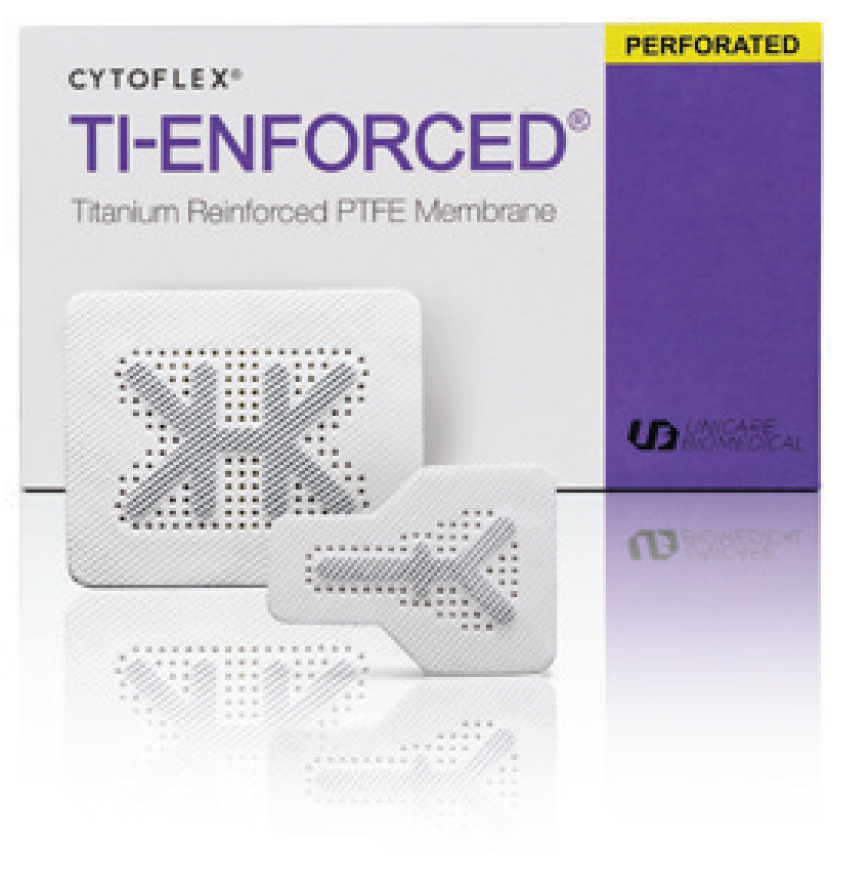
Perforated Ti-Enforced® membranes are made of the same materials and features as Cytoflex® Ti-Enforced® membranes with the exception of perforation. The perforated macro holes allow for direct vascularization across the membrane. Both the Ti-Enforced® and perforated Ti-Enforced® membranes are designed to achieve predictable outcomes for GBR procedures.
Perforated Ti-Enforced® Product Flyer (PDF File)
FAQ
- What is Perforated Ti-Enforced® membrane made of?
Perforated Ti-Enforced® membrane is made of the same material as regular Ti-Enforced® membrane. It is composed of a titanium frame enclosed within two layers of expanded polytetrafluoroethylene (ePTFE) material. It is a passive, non-load bearing membrane.
- What are the indications of Perforated Ti-Enforced® membrane?
The perforated Ti-Enforced® membranes have the same indications as the regular Ti-Enforced® membranes. The membranes are used as a space-making barrier in the treatment of periodontal defects and augmentation of the alveolar ridge in accordance with guided tissue regeneration principles. It is a temporary, non-resorbable, implantable material.
- How long is Perforated Ti-Enforced® membrane implanted for?
The membrane is intended to be submerged and implanted for more than 30 days and up to 6 months.
- Are perforated Ti-Enforced® membranes textured on both sides?
All Ti-Enforced® membranes have macro texture on both surfaces.
- What are the advantages of texturing on both surfaces?
By having both surfaces of Ti-Enforced® textured, doctors do not have to be concerned about which side should face up toward the gingival tissue or face down toward the bone graft material. This makes it easier for doctors to use the membrane. The unique, "strawberry field" texture pattern provides extensive surface area for the gingival tissue to adhere to the membrane, and to stabilize the wound site. The texture surface facing the bone graft material prevents the membrane from sliding around, making it easier to position the membrane over the graft material.
- Can Ti-Enforced® be trimmed and shaped to fit a variety of defect sizes?
The membrane may be cut to the desired configuration with scissors. After trimming, there should be no sharp corners or rough edges. To enhance stability and provide adequate protection of the space over the bony defect, the membrane should be trimmed to extend 3mm beyond the defect margins and to remain at least 1mm from adjacent, uninvolved teeth. The membrane may be curved to create a dome shape, if desired, to contain the graft.
- Can screws or tacks be used to stabilize Ti-Enforced® membranes?
Ti-Enforced® membranes can be stabilized with surgical tacks or screws.
- What are the recommended closure techniques?
In general, a double layer closure, with a deep layer of horizontal mattress sutures followed by a standard wound closure with interrupted sutures is recommended. During primary closure, adequate flap release must be accomplished in order to achieve a tension-free closure. The use of long lasting monofilament suture is recommended to prevent premature loss of suture strength, which may lead to early membrane exposure during the initial 2-week healing period.
- How should the membrane be removed?
When removal is desired and the membrane is exposed, the membrane may be removed by grasping with forceps and gently removing it from the tissue. Local anesthesia may be provided to enhance patient comfort, but is not necessary. If primary closure is obtained at placement, surgical exposure may be required for removal. Re-epithelialization will occur within 2 to 3 weeks to complete the healing process. After membrane removal, final bone maturation will take place for 6 to 12 months from the time of implantation. This time frame should be considered in treatment planning cases involving prosthetic loading of regenerated bone.
- What is the shelf life of Perforated Ti-Enforced® membranes?
All Ti-Enforced® membranes are double packed and have a 4-year shelf life from date of manufacture.
- Have you ever confirmed an allergic reaction to Ti-Enforced® membranes?
There has been no reported allergic reaction caused by Ti-Enforced® membranes. It is made of inert, biocompatible ePTFE material.
- Are there any contraindications?
The Ti-Enforced® membranes, whether perforated or not, are not designed for use under load bearing conditions.
- What are the potential complications?
Possible complications associated with any oral surgery include infection, flap slough, perforation, abscess formation, bone loss, pain and complications associated with the use of anesthesia. Depending upon the type and severity of the complication, as judged by the clinician, early material removal may be required.
AVAILABILITY
Ti-Enforced® ePTFE membranes are double pouched, sterile, and available in a variety of sizes and configurations.

